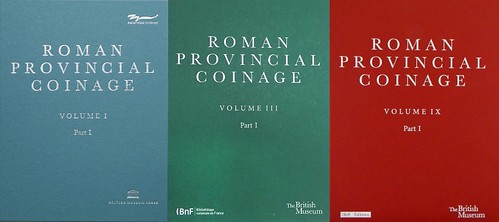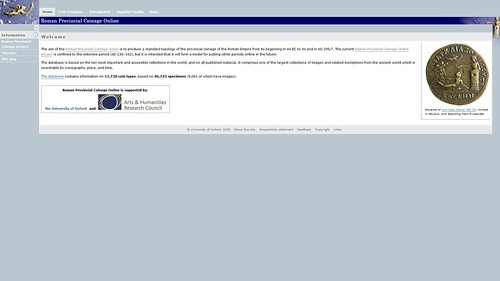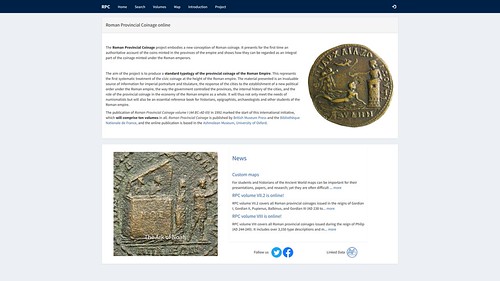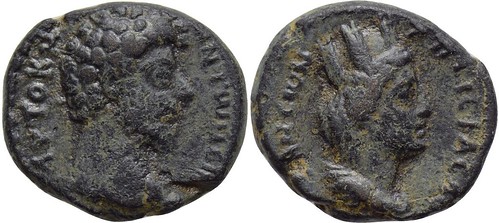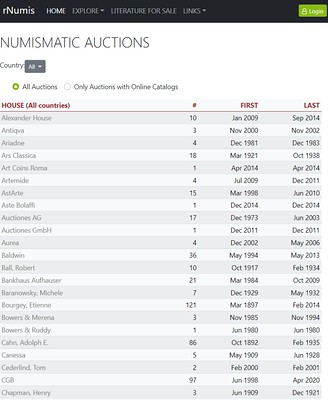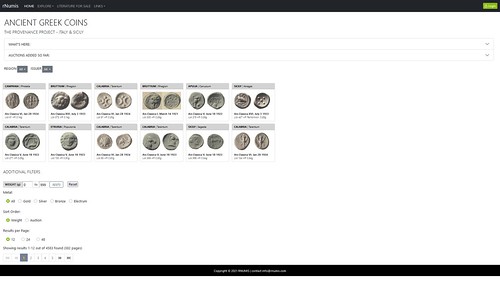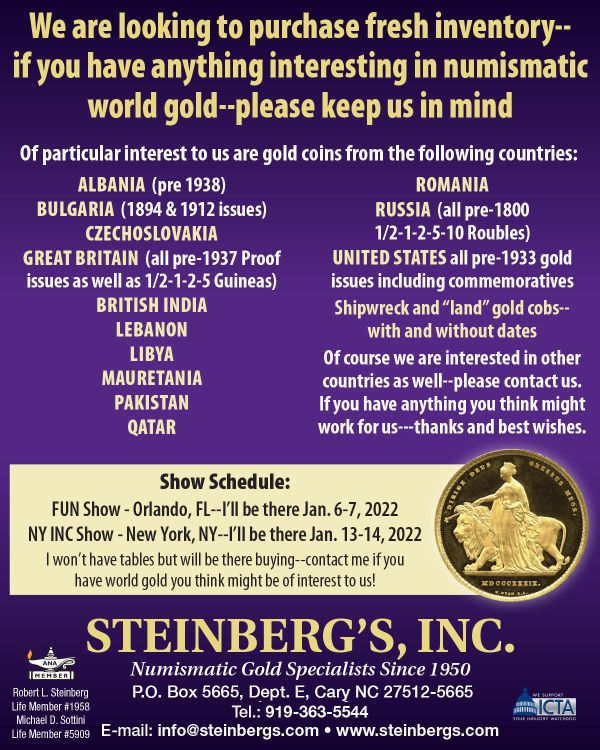
PREV ARTICLE
NEXT ARTICLE
FULL ISSUE
V25 2022 INDEX E-SYLUM ARCHIVE MORE WEBSITES FOR RESEARCHING ANCIENTSMark Fox submitted this article on additional online resources for researching ancient coins. Thanks! -Editor
More Websites for Researching Ancients the
Modern Way by Mark Fox The recent discussions concerning online resources for researching ancient coins attracted this writer's attention. Gradually, they made him realize the need for a fuller treatment on this very important topic. Numismatic websites in general help bridge the paper page with its digital counterpart, but rarely are these powerful research tools given any attention in either format other than the occasional short note stating that a particular site exists and offers to make the numismatic world a better place in one or more ways.
For ancient coin websites, the long-term plan is to go on an online safari of sorts and scour the
four poorly explored corners of the Internet for some big and useful classical numismatic game.
This current effort is intended to serve as an eye-opening taste of three websites that have so far
eluded the recent discussions. They illustrate what still lies in the digital jungles and why a
comprehensive list is badly needed. Let us not forget that websites like the ones under
discussion were created by everyone from shy, reclusive collectors to famous, scholarly
numismatists and institutions, and contain some very fascinating backstories. This part of our hobby is also a
part of our history. If we don't start collecting and preserving it now, we may lose a lot of
research gold in the very near future. And this doesn't even take into consideration the databases
themselves. Just this year, we lost the original ISEGRIM search engine (possibly the oldest
digital ancient coin database in the world) and Asia Minor Coins (which was a great research
stop for many ancient coin attributors like this writer). Thankfully, as already noted, there are
also some new and innovative online works in progress, two of which form a component of this
writer's 1. Roman Provincial Coinage Online (RPC Online): https://rpc.ashmus.ox.ac.uk/
This is hands down one of the best designed numismatic websites of any kind on the Internet.
Not only is this the opinion of this writer, but also of a collector with savvy web development
skills. It has been a fixture on the web since October 2006, wrought by a handful of dedicated
numismatists from the University of Oxford who, at the time, were just concerned with
cataloging the Roman provincial coins struck during the Antonine Period (A.D. 138–192).
Consider, from the pair of enclosed screen shots, how the project morphed, from 8th November 2006 to last Sunday. Now, the whole Roman provincial series
(from roughly 44 B.C.–AD 297) is not only slated to be For a more thorough understanding on what RPC Online is all about, including what Roman provincials are and the importance of coin submissions from us collectors, this writer shockingly had the foresight to already write an article in support of the hallowed RPC cause, for the August 2015 issue of The Numismatist: https://www.academia.edu/15289195/Not_Built_in_a_Day_RPC_Online_ For a bit of interest, attached is one of the Roman provincials from my own collection that can be found on RPC Online, a bronze of the city of Tyana (in Cappadocia; 17mm, 4.08 g.), struck for Marcus Aurelius (A.D. 161–180). The photos are courtesy of Numismatik Naumann. See if you, the reader, can find the coin in the database! Also, for those who relish the latest news, the following projection was personally provided by Dr. Andrew Burnett back in November of last year: "The current plan is to try and get the Asia part of V online (V.2) for the Warsaw conference next year; and the rest of VI also sometime in 2022. In terms of printed volumes, next year should see VII.2 (the rest of VII) and after that IV.4 (which is only Alexandria – enormous enough for a volume on its own). So we're gradually getting there...!" In a follow-up to this, he added: "Maybe add that [RPC] VIII in print will be next after the others." 2. & 3. Numismatic Auction Database Explorer + Ancient Greek Coin Provenance Explorer
https://www.rnumis.com/auctions_top.php
https://www.rnumis.com/greek_coins_top.php From an Internet mainstay such as RPC Online, we now focus our attention on two newly realized numismatic ambitions of Dr. Steven Moulding. The projects have been combined together like this since, as the names suggest, they are practically siblings. For this article, Steve was asked what inspired him to create these extremely handy digital tools, and that was all it took to open the floodgates of his enthusiasm! As such, this writer is going to sit back now, perhaps open an old auction catalog with ancient coins of religious and mythological significance that he will never be able to afford, and let Steve do the talking!
So, as one can see, the variety and quality of online research tools for ancient coins (in addition
to those that had been detailed earlier) are quite vast and are constantly changing. However,
Fukube from the *Hyouka novel/anime mystery series (with his *Note: Episode 19 of Hyouka contains one of the most amazing displays of deductive reasoning that this writer has ever seen in any form of media—and it concerns…well, just watch it (preferably subbed rather than dubbed to get the true flavor)!
To read the earlier E-Sylum articles, see:
Wayne Homren, Editor The Numismatic Bibliomania Society is a non-profit organization promoting numismatic literature. See our web site at coinbooks.org. To submit items for publication in The E-Sylum, write to the Editor at this address: whomren@gmail.com To subscribe go to: https://my.binhost.com/lists/listinfo/esylum All Rights Reserved. NBS Home Page Contact the NBS webmaster 
|
